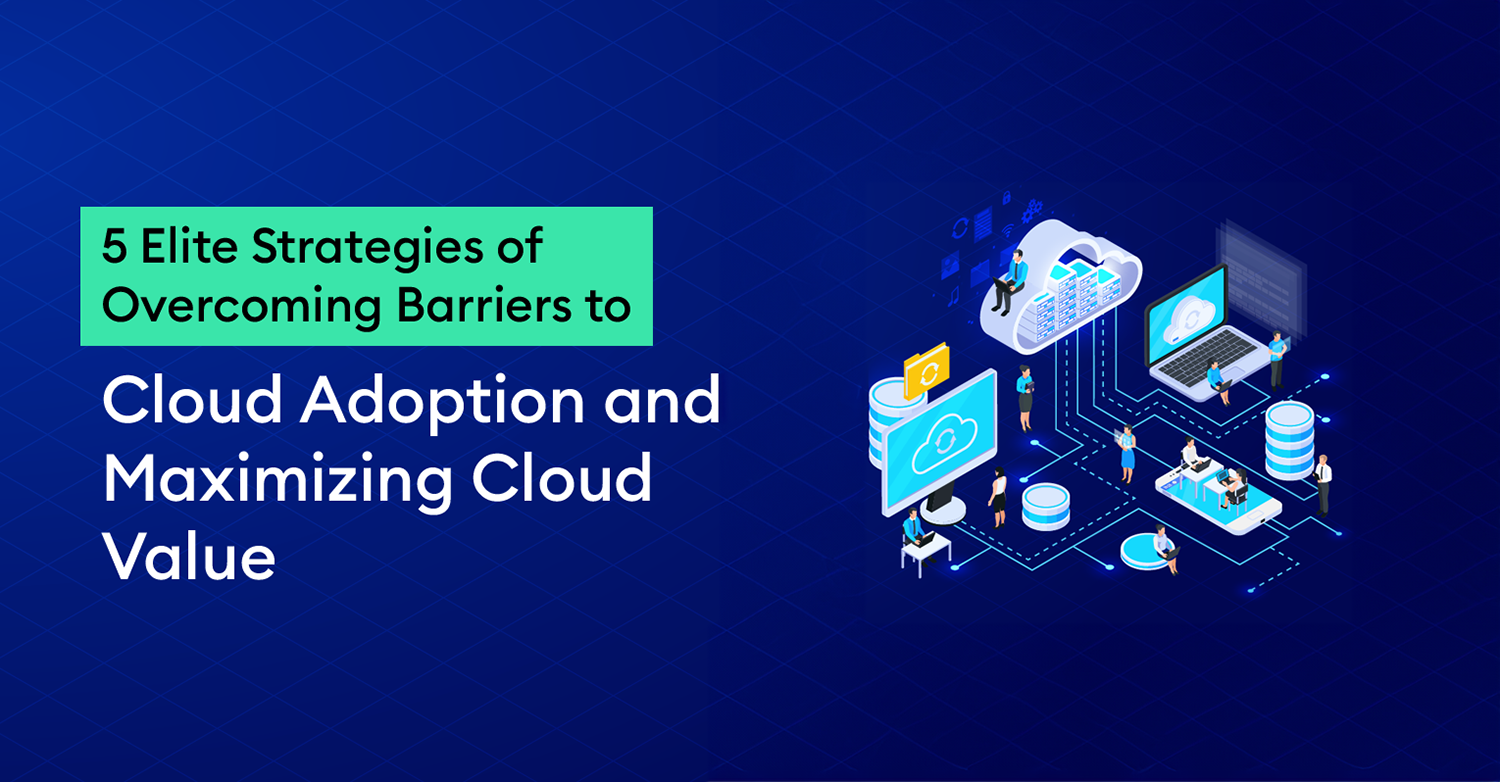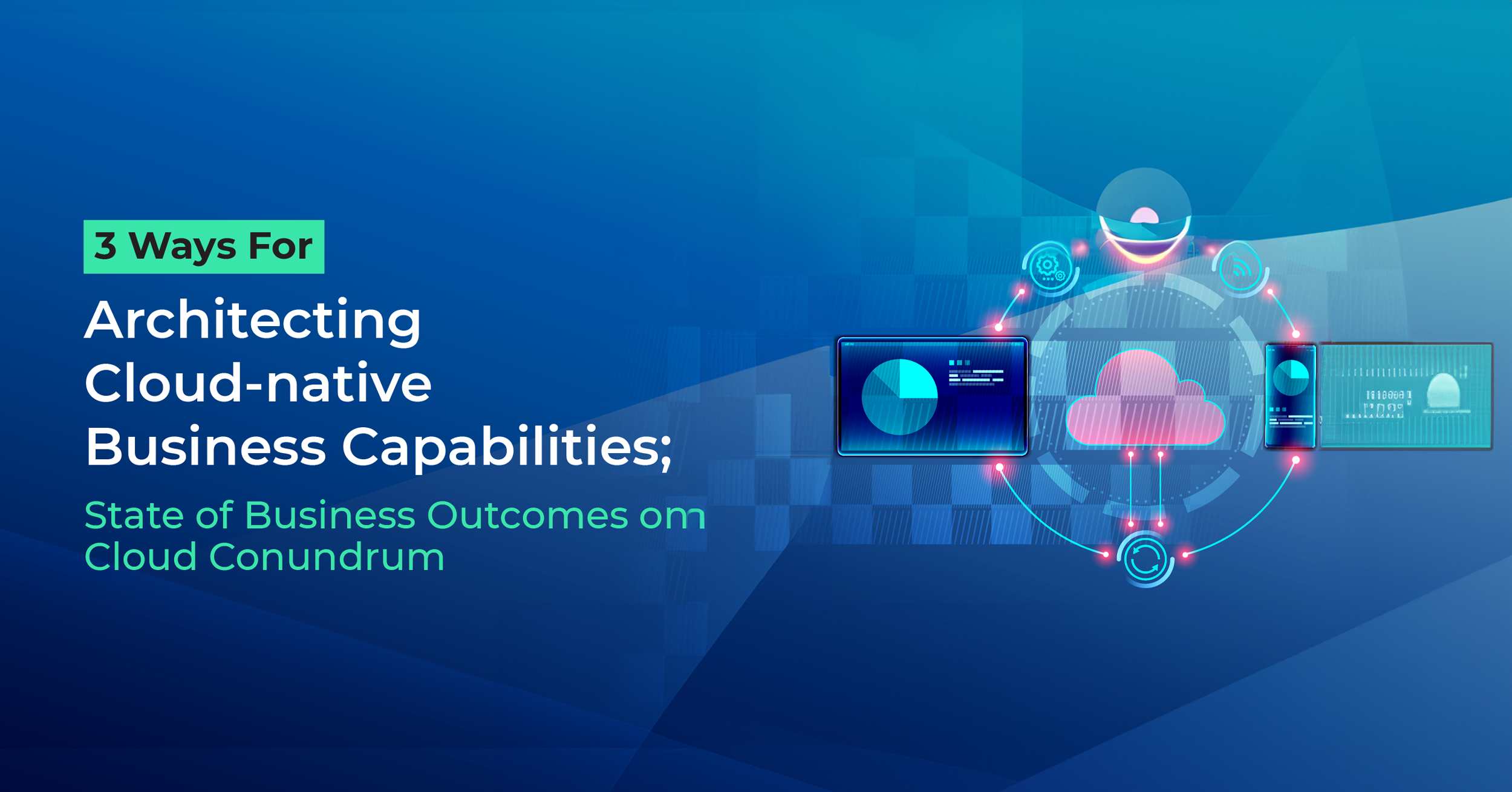Assessment of Cloud Readiness: The First Step Towards Cloud Migration
When talking about digital transformation, cloud technology plays an important role. Cloud technology impacts the business when implemented properly and can truly bring transformation from top to bottom. At the beginning of any organization’s journey to the cloud, it must assess its performance. Specifically, organizations need to assess their business, people, processes, and technology to see if they are ready to move to the cloud. Before moving towards the cloud, the following elements of cloud readiness must be considered:
- Current Technology: Platform, applications, infrastructure, and data.
- Technology Team Readiness: Whether the entire technology team is ready to begin deploying and supporting cloud solutions for operations or not?
- Functional Readiness: Whether all the individual functional areas of the technology group possess basic skills, focus, funding, and time to start the company’s journey to the cloud?
Gartner predicts that 28% percent of spending within key enterprise IT markets will shift to the cloud by 2022. The healthcare sector is now leading on cloud adoption as compared to its contemporaries. According to McKinsey, cloud capabilities have the potential to generate the value of $100 billion to $170 billion in 2030 for healthcare companies.
5 Primary Approaches of Incorporating Cloud Culture in Enterprises
A step towards cloud migration counts on management and the team to understand the importance of cloud, and then they must ask important practices and questions of a company before migration. Cloud’s flexibility and speed, help companies quickly test and replicate specific use cases, such as expanding services, personalizing customer service, and more.

- Embedding Cloud in Core Strategic Discussions: The cloud, as part of a holistic digital transformation, must be integrated into core strategic discussions and with proper guidance. Understanding how the cloud disrupts, transforms, and accelerates business models will determine how companies move towards transformation.
- Technical Leadership: The fastest growth towards digital transformation and adoption of cloud starts from guiding and training the team. Enterprises must create a cloud culture so those team members can agree to a common decision, and enterprises must invest time in guiding the team to make them understand the tools and scenarios which will be required in early iterations.
- Securing Configuration of Systems and Applications: Companies must seek to ensure the risk mitigation plans or cloud security before approving cloud-related strategies. Security-as-code (SaC) is one such most effective approach to cloud security, which is a step ahead of IaC (Infrastructure-as-Code). SaC is a method of codifying security and policy decisions that are stored and automatically incorporated in the CI/CD pipeline to continuously detect vulnerabilities and bugs. This brings collaboration between development and security teams to help nurture the culture of security across the organization.
- Considering Cloud’s Financial Impacts: Cloud migration is now mainstream with users’ expectations for lower-cost solutions and better agility. When companies modify their IT infrastructure they often choose for additional storage and end up wasting storage capacity which is additional. Shifting the database to the cloud reduces this cost as well as equipment costs.
5 Step Plan for Successful Cloud Migration
From the outset, companies have used advances in technology to migrate systems to more functional platforms. The basic migration process demands understanding the benefits of the new system, assessing gaps in the existing system, planning, and then migration. However, migrating large numbers of legacy applications to the cloud can sometimes be intimidating for organizations due to the sheer scale of the changes required. The 6 successful strategies that companies should consider before migrating towards the cloud are:
- Assessment of Cloud Readiness: Most organizations fail to complete their cloud modernization project primarily due to miscalculation and planning from the beginning. When optimizing application portfolios, companies tend to take a highly integrated approach with the goal of moving quickly to the cloud or outside the data center. Evaluating applications and workloads for cloud readiness enables organizations to determine which applications and data can and cannot easily migrate to the environment and which cloud computing and delivery models (public, private, or hybrid) can be supported.
- Define Goals: Each project goal goes back to KPIs, business goals, and technology goals. Define business goals and align those business goals with technology such as simplified applications, accelerated build-up, and elimination of debt engineering. Build KPIs so teams can focus on exactly what needs to be done and how.
- Choose Level of Cloud Integration: Cloud integration is a system of tools and technologies that connect various applications, systems, repositories, and IT environments to exchange data and processes in real-time. Fully cloud or hybrid deployments are preferred cloud integration. Cloud integration disrupts data, improves connectivity and transparency, and ultimately streamlines business processes.
This is to meet the need for data exchange between cloud applications and the unification of information components. More and more companies are using hybrid cloud and on-premises applications, which is driving a great demand for progressive approaches to integration. So identifying the type of cloud to be used is important. - Identify and Address Security Challenge: However, IT security practices are still new to many organizations, leaving their network infrastructure and evolving systems vulnerable to cybersecurity breaches that could reveal their identity online. They cannot keep up with innovation and growth opportunities due to their security.
These are “security blockers” when development teams are tied to ineffective systems, processes, and technologies because their security is not guaranteed and therefore not cloud-ready. This issue affects companies more broadly, as longer and more expensive development cycles mean that there is no room for business expansion. Security practices like SaC must be implemented to protect the cloud structure. - Migrate to Cloud: Companies must decide how to migrate towards cloud i.e., either migrating complete applications at once or migrating component by component. It’s always better to start with services that have the fewest dependencies on the cloud hence the internal services must be moved first and then the outermost service or one which is closest to customers.
- Incorporate Cloud Automation: Automating cloud migration can address consumption, productivity, and skill gaps, and leverage technology to reduce manual effort. This kind of automation basically involves taking a programmatic approach to automation in core areas such as patching code, installing, configuring, and managing cloud services. Automation can eliminate problems not only by automating the migration effort but also by simplifying the process, resulting in minimal application disruption during migration to the cloud with no business function changes after moving to the cloud.
Unfolding New Capabilities with Cloud Adoption
When an organization moves to the cloud, it often changes the way the organization thinks about IT solutions. Cloud computing allows organizations to operate in a more experimental manner. This freedom allows an organization to “test” a new solution without a long-term impact on infrastructure costs.
Cloud computing largely “reuses” critical resources to accelerate the deployment of new solutions. This is another change in thinking required in our conventional model to validate new solutions. If an organization decides to make these capabilities available to its internal users, a robust plan must be developed before implementation. This is why most technology organizations are actively starting to implement the cloud which will need a change in traditional thinking.
 All Posts
All Posts


